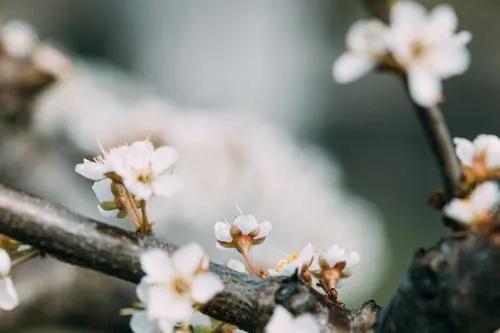Pyrus calleryana, or the Callery pear, is a species of pear tree native to China and Vietnam, in the family Rosaceae. It is most commonly known for its cultivar 'Bradford', widely planted and increasingly regarded as an invasive species.
Callery pear Care
Pyrus calleryana



Pyrus calleryana is deciduous, growing to 5 to 8 m (16 to 26 ft) tall, often with a conical to rounded crown. The leaves are oval, 4 to 8 cm (1 1⁄2 to 3 in) long, glossy dark green above, on long pedicels that make them flash their slightly paler undersides in a breeze. The white, five-petaled flowers are about 2 to 2.5 cm (3⁄4 to 1 in) in diameter. They are produced abundantly in early spring before the leaves expand fully. The inedible fruits of the Callery pear are small (less than one cm in diameter), and hard, almost woody, until softened by frost, after which they are readily taken by birds, which disperse the seeds in their droppings. In summer, the shining foliage is dark green and very smooth, and in autumn the leaves commonly turn brilliant colors, ranging from yellow and orange to more commonly red, pink, purple, and bronze.
How to Care for the Plant

Water

Worse than dry, thirsty roots is waterlogged, drowning roots. although a little depression in the soil aids summer watering, it's important to bring the soil around the tree up to the level of the surrounding soil for the winter. if not filled in, water could freeze around the trunk and injure the tree.

Pruning

Never remove more than a third of the foliage in any one year and to cut just above a node on the stem.

Fertilizer

Mix the recommended amount of liquid fertilizer and water in a watering can. Then simply pour the mix into the soil as if you're watering the plant.

Sunlight

Needs 12-18 hours of indirect sunlight.

Soil

Use a potting mix, which makes it safer for plants because it doesn't contain pathogens such as fungus or other diseases.

Temperature

Plants are hardy to about -40°C (-40°F) when they are fully dormant.

Container

Whether it be plastic or clay, make sure the pot you select has drainage holes in the bottom to prevent over-watering.

Popularity

6,374 people already have this plant 684 people have added this plant to their wishlists
Discover more plants with the list below
Popular articles






